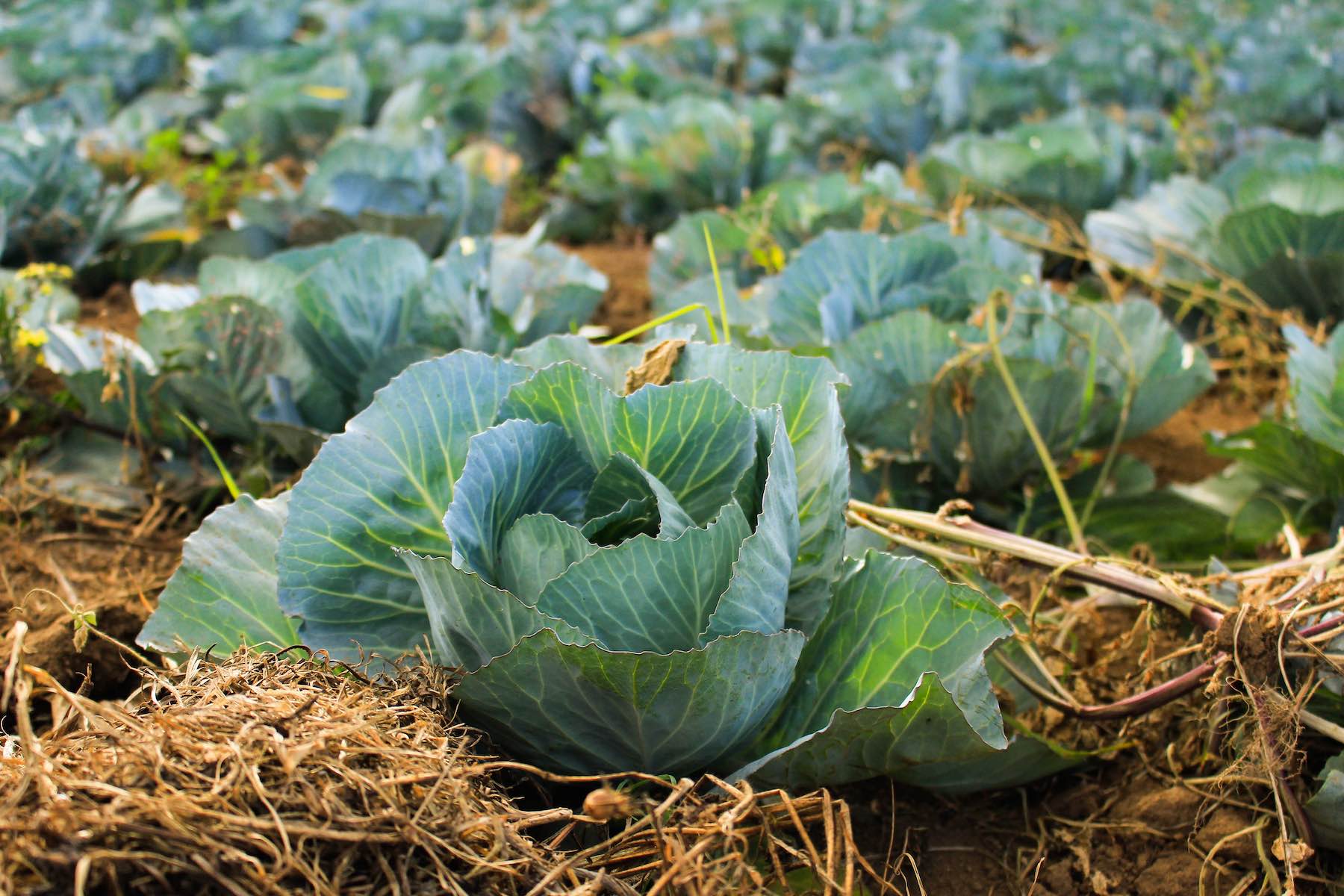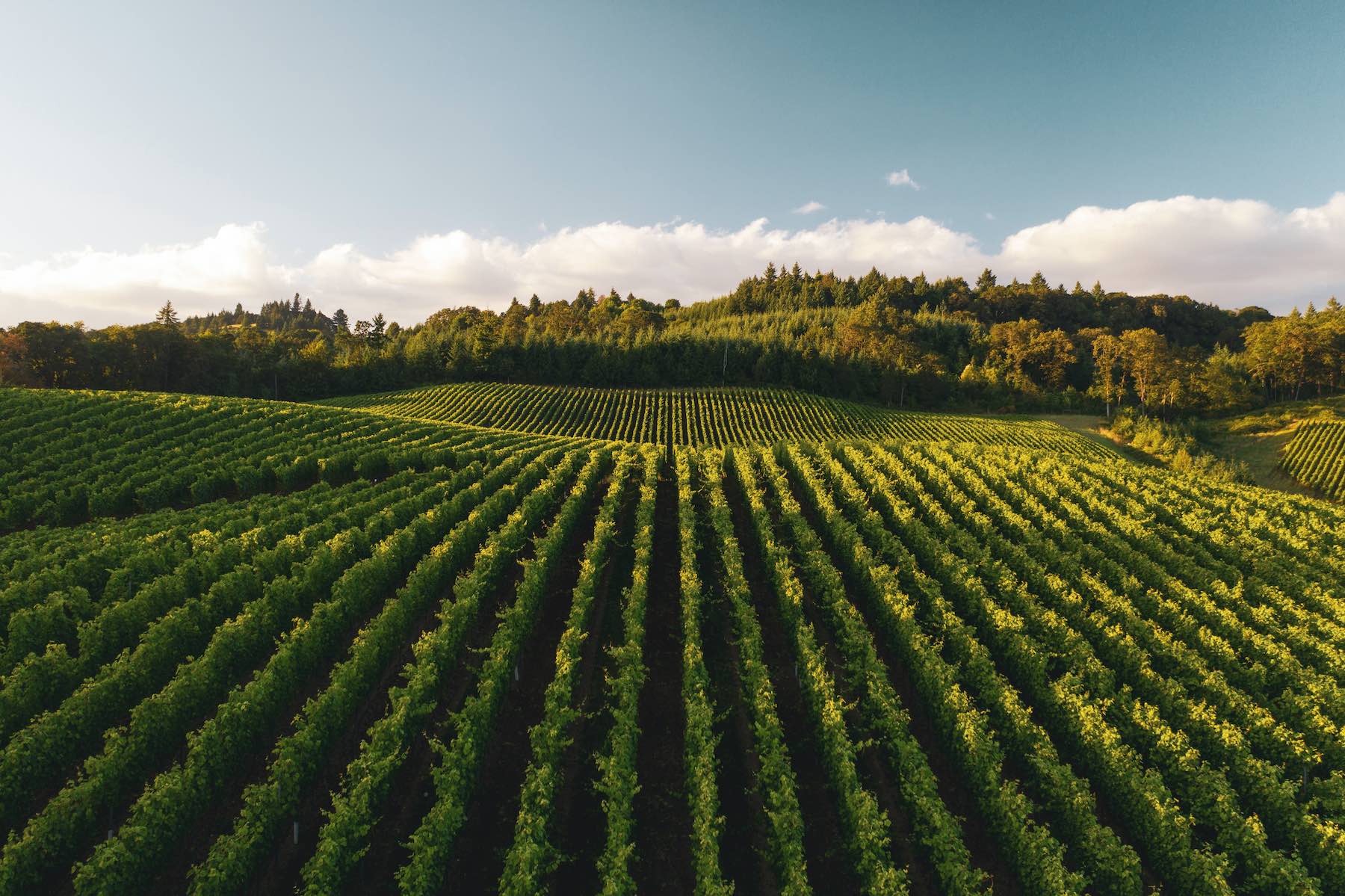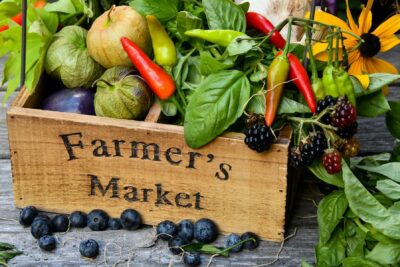As animal agriculture’s widespread damage to the planet becomes ever more serious, attention turns to how we can support animal farmers to transition to a just, sustainable, and humane food system – by which, of course, we mean a plant-based one. Here are 64 options for animal farmers and everything you need to know about why a switch to a plant-based food system is imperative for people, animals, and our planet.
What’s Wrong With Farming Animals?
In short, it’s bad for everyone except, of course, the multi-trillion dollar animal agriculture industry.
Animals
Farming and slaughtering animals is obviously very bad for the animals. The vast majority are raised inside the pitiless factory farm system, where they endure painful (but legal and routine) mutilations and shockingly cramped conditions. Almost all their natural behaviors are denied them, and they do not receive individual veterinary care when they get sick, which so many do. Mothers are treated as breeding machines. They are permitted to live only so long as they can produce babies who matter greatly to them, but who we see only as a burger or a chicken wing, and not the sentient individuals they are, with rights not to be deliberately harmed.
And when we consider the appalling impact that farming animals has on wild animals, too, we realize the damage, destruction, and suffering caused to our animal kin by this industry is far too great to quantify. And yet, it can be stopped; we just need to stop funding this industry by boycotting its products.
Planet
Animal agriculture is the number one cause of deforestation, a primary cause of habitat destruction, wildlife loss, species extinction, freshwater use, soil degradation, land use, and a leading cause of climate breakdown, water pollution, and air pollution.
Why do we put up with it? Why do we allow this industry to run roughshod over our planet? Because it invests vast sums of money to lobby, bribe, bully, and distort facts so most of us never even see the damage it does. But the science is clear: going vegan is the “single biggest way” we as individuals can help protect the planet.
And if you’d like some help as you dip your toe into the world of plant-based eating, check out our free guided challenges.
People
It’s not even as if farming animals is good for people. The amount of land it uses means Indigenous peoples are still being displaced from their ancestral lands to make way for pasture and feed cropping. The pollution washing out of factory farms and slaughterhouses makes people who live close by sick. The industry is driving climate breakdown which will hit the poorest in our world soonest and hardest, and will affect every one of us eventually. It drives antibiotic-resistance, which already kills more than a million people a year, and makes many more very ill. It is an incubator of pathogens that have pandemic potential, and could kill millions more people. And the consumption of the products it creates — meat, milk, and eggs — is associated with greater risks of heart disease, strokes, type 2 diabetes, some cancers, and many other conditions.
Caring about people is just one more reason why we are vegan.
How Do We Feed the Human Population Without Meat?
One concern that is regularly voiced is how we would feed a growing population on a plant-based diet, and the answer is: a WHOLE lot easier than we do now. Producing meat, milk, and eggs is “staggeringly inefficient,” according to world-renowned think tank Chatham House. This is because it requires far more land, water, and energy than producing plant-based foods. At the moment, instead of growing plants to feed the 8 billion human population, we are growing plants to feed the 80 billion animals who are farmed every year. If we all switched to plant-based eating, we could protect our water supplies, but also free up 75% of the current farmland, and this huge swathe of land — the size of North America and Brazil combined — could be rewilded, and returned to nature. This would allow wild ecosystems to flourish again, reversing the world’s sixth mass extinction event that is already underway. And crucially, it would draw down vast amounts of carbon from the atmosphere, helping us to end the threat of climate breakdown.
Supporting Farmers Transitioning to a Sustainable System

The current system is unsustainable. It is doing tremendous damage to our planet, our health, and our ability to survive beyond this century. It is clear that the system must change. We know that farmers — on whom we all rely — live very different lives to most other people, and that their community and traditions matter greatly to them. And we believe these can be protected as we incentivize farmers to move away from the damaging practices of old, and embrace a future where people, animals, and the Earth are better cared for and protected.
64 Ways Farmers Can Earn a Living Without Farming Animals
The options available to farmers who wish to get out of animal agriculture very much depend on where they are in the world, the land they farm, the locality of their customer base, and the resources they have available to them — from on-farm infrastructure to grants and subsidies. But we believe there is a solution — or more likely, a combination of solutions — for everyone and we are grateful to Stockfree Farming for developing these ideas. Ours is not an exhaustive list, but is intended to highlight the range of opportunities available, and to inspire further ideas for practical transitioning.
Grow Crops for Human Consumption
The options here very much depend on soil type and climate. And while this list was created for Scottish farmers, it can certainly apply to people in other areas of the world, too.

- Grow legumes. Beans, peas, and lentils are low-fat, high-fiber, and low-cost making them a powerhouse for health and nutrition all over the world. In fact, beans get special mention as the cornerstone of every Blue Zones diet.
- Grow cereals. Many farmers already grow cereals for the unsustainable animal farming system. Switching to growing high-quality oats, wheat, barley, rye and more for humans is a no-brainer.
- Grow vegetables. Choosing those that are suitable for soil and climate allows farmers to create rotational practices that are good for the Earth and great for people.
- Grow mushrooms. They can be grown indoors which means they provide a great opportunity to repurpose existing farm buildings.
- Grow fruits. From planting fruit trees to soft fruit bushes, there are a wealth of options for farmers to cater to the smoothie-loving generation.
- Grow nuts. A source of good fats and proteins, nuts are often important for plant-based eaters. Plus, nut trees are allies in the climate crisis as they draw down CO2 from the atmosphere.
- Farmers can add value to all of these by creating foods from the crops they grow. For example, dried legumes can be flavored and made into tasty snacks; oats can be turned into milk; wheat and rye can be baked into loaves of bread; mushrooms can be made into paté; vegetables and fruits can be turned into juices and smoothies; and nuts can be made into nut butter — all reasonably simply.


Specialty Crops
- Grow flowers. The global cut flowers market is estimated to be valued at $36.4 billion, which makes it a beautiful and fragrant proposition worth investigating.
- Grow plants for nurseries. All the trees, shrubs, roses, and plants on sale in nurseries were grown somewhere else.
- Grow hemp. The market for this is expanding all the time, with the plant being used for clothing, toiletries, and food.
- Grow seaweed. Obviously, this applies only to those with coastal farms!
- Grow buckwheat. Not a grain at all, this plant is more closely related to sorrel and rhubarb. It’s the basis of the much-loved soba noodles, so there is an option to add value right there!
- Grow oilseed rape. It is in demand from the food, cosmetic trades, and has industrial uses, too.
- Grow flaxseed. This is a great plant-based source of omega 3 fats, and has a loyal and growing following among the health conscious.
- Grow plants like lavender, rosemary, or mint for essential oils.
- Grow grapes for winemaking.
- Add value to the above by making floral bouquets from your flowers, selling plants directly to consumers, making soaps from the essential oils, and wine from the grapes.

Repurposing Buildings
- Storage space rental, for everything from household items to overwintering for motorhomes.
- Rent the space to local groups and classes, or for recitals, dances, or band practice.
- Wedding venue. Some buildings lend themselves to creating an amazing atmosphere for a big event.
- Meeting venue. Farm buildings can be easily repurposed to become meeting venues, regardless of whether the building is big or small.
- Open an activity center for older children. An old barn could be revamped for a number of different indoor children’s activities such as a games hall, arts and crafts space, trampolining, and soccer or baseball.
- Open a soft play center for toddlers and young children.
- Gin or whisky distilling. Barns can be repurposed to create distilleries.
- Establish your own brewery.
- Domestic animal boarding facilities. Enclosed outdoor areas also make a great addition to the animals’ stay and may be a necessity depending on the animal.
- Set up a coffee roastery. Just think of the aromas every day!
Alternative Land Use
- Create a community garden and rent out the plots to local people.
- Create a destination garden. If you are green-fingered and can create a beautiful space for people to come and enjoy, this could work for you, especially if you add a children’s play area or coffee stall.
- Native tree planting. Many governments are making subsidies available to plant trees. It could be worth checking out.
- Ecosystem restoration, otherwise known as rewilding. What was there before agriculture wiped it out? Can it be brought back? Again, there may be subsidies and grants available, and if there aren’t, ask your political representative why.
- Create “leafu.” Leafu (also called leaf protein concentrate) is a nutrient- and protein-rich food for human consumption, made by a process called leaf fractionation. It can be made from a variety of plants including grass and clover.
- Green burials. Demand for environmentally friendly burials is growing all the time.
- Outdoor weddings. Farmland can be a great space for outdoor weddings, offering a change of scenery from the traditional indoor setting.
- Music festivals. Get it right and you could be hosting the next Glastonbury festival!
- Film shoots. Register your land and buildings and even home with location scouts, and you may see your farm on the big screen.
- Secure dog walking. These are becoming increasingly popular for people with troubled dogs, or for those who need to top up their training. Add an agility course for dogs, too.
- Set up a go karting course.
- Make a maize maze. Kids of all ages love them!
Retailing
- Craft goods. Making and / or selling traditional goods either through existing retailers or via a new outlet can be an exciting diversification.
- Establish a farmers’ market, to sell your own produce and invite stallholders to sell theirs.
- Open a farm shop on the site.
- Open a plant-based cafe / diner / pop-up restaurant / taproom.
- Open a nursery to sell garden plants, gifts, and ornaments.
- Open a pick-your-own farm: part produce sales, part family attraction.
- Start a rent-a-tree business. This allows customers to rent a single tree for a season (this could be a fruit or nut tree) which they can visit in summer/autumn to harvest it. In the meantime, these trees are maintained by the farmer or farm workers.
- Start a veg box scheme to deliver locally grown produce to local people.
- Set up vending machines. They can sell seasonal fruits and vegetables while you are away doing other things.
- Establish a farm machinery sales business or rural auctions.

Renewable Energy
- Set up wind turbines to harvest this natural energy.
- Establish a solar farm to capture the sun’s energy.
- Anaerobic digesters. These are a great way to take the waste from vegetable production and convert it into energy.

Tourism & Hospitality
- Open a farmhouse bed and breakfast.
- Provide self-catering holidays by repurposing existing buildings or adding lodges to the site.
- Register with Airbnb — you can make money all year round.
- Open a campsite. Tap into the holiday market and open the land for campers.
- Establish a “glampsite” by adding luxury pods, yurts, or shepherd’s huts to your site.
- Open a hikers’ or cyclists’ cafe / rest stop. If you are on a popular route, entice passersby in for rest and refreshment. You could also provide hostel accommodation.
- Offer retreats. Yoga retreats and silent retreats are very popular with those of us stuck in a fast-paced life, and there is a real growth in interest in meditation and mindfulness.
Nature-Based Tourism
- Offer guided walks. If you are in a beautiful part of the world, visitors will love the benefits of your local knowledge.
- Birdwatching. There are an estimated 16 million active birdwatchers in the world. Perhaps you have birds on your land that they would like to see.
- Wildlife watching. It’s not just birds people like to see!
- Forest bathing holidays. If you own woodlands or forest, introduce guests to the Japanese art of Shinrin Yoku.
- Foraging workshops. If there are wild areas around you, there will be wild plants worth harvesting.
These are just some of the opportunities available to farmers as we move towards a more compassionate and sustainable food system. And as the industry continues to use its vast wealth and influence to lobby for business as usual, we can use our voices and contact our own governments to prioritize supporting these farming transitions.



